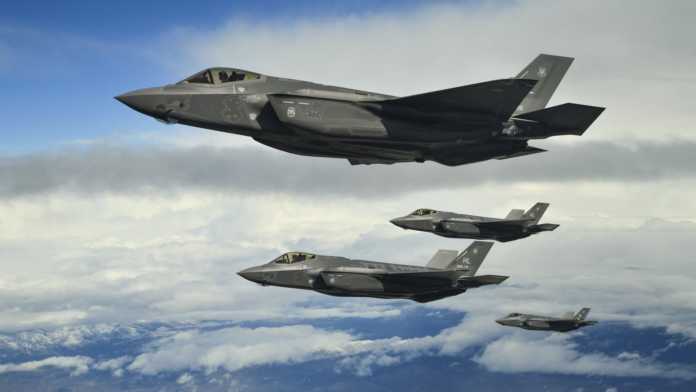
The F-35’s infamously troublesome onboard computer suite will be getting completely replaced in the next two years, a top Pentagon official said on Tuesday.
Lockheed Martin’s F-35 Lightning II, better known as the Joint Strike Fighter, is no stranger to failures and faulty designs. It’s limited by the weather and even in speed, it’s had one faulty device after another, and missiles specially designed for the airplane can’t fit inside its internal weapons bays. For many Pentagon strategists, the F-35’s wide array of sensors and its hefty computer were its saving grace.
That platform, the Autonomic Logistics Information System (ALIS), is a serious number-cruncher. It handles some 65 tasks including mission planning and flight scheduling; it processes the colossal amount of information being collected by the F-35’s many antennae; it schedules repairs and maintenance on different parts of the aircraft as they wear – it’s even capable of placing automatic orders for parts!
However, the ALIS has not escaped the plagues of problems faced by other F-35 systems. According to a Government Accountability Office (GAO) report in November 2019, one Air Force squadron spent 45,000 hours per year “performing additional tasks and manual workarounds because ALIS was not functioning as needed.”
Undersecretary of Defense for Acquisition and Sustainment Ellen Lord said on Tuesday that Lockheed would be replacing ALIS completely with a new system, the Operational Data Integrated Network (ODIN), streamlined for efficiency and “with the voice of the maintainer and the pilots at the forefront of the requirements list,” Reuters reported. “We have heard our maintainers on the flight lines loud and clear.”
Lord said that the new system would be based in the cloud and that all F-35s not deployed on ships will have received the upgrade by the end of 2022.
According to the GAO report, some of the problems with ALIS have included the computer server’s large size and its ability to connect to the network, errors in its repairs and parts-tracking programs that require extensive troubleshooting of those programs, and that the system doesn’t provide enough transparency to make fixing it a quick and simple process. In many cases, the complexity requires Air Force engineers to go to Lockheed itself to get the problem fixed.
Air Force Secretary Heather Wilson once blasted the system as “so frustrating to use, maintainers are … looking for ways to bypass it and try to make the F-35s mission-capable.”
“I can guarantee that no Air Force maintainer will ever name their daughter Alice,” she quipped in March 2019, Breaking Defense reported.
In fact, in 2018 two US Air Force bases simply stopped using the system altogether, electing for an older system to manage their training programs.
Col. Paul Moga, commander of the 33rd Fighter Wing at Alaska’s Eglin Air Force Base, flatly told Defense News in March 2019 the squad was “not going to start using TMS [Training Management System] again until it works.”
The Israeli Air Force has likewise imported its own Command, Control, Communications and Computing (C4) system on top of Lockheed’s, in part due to ALIS’ unreliability but also because of the idiosyncratic needs of the IAF compared to other forces using F-35s. The IAF operates its own version of the jet, the F-35I “Adir.”
Further, a 2018 report by Robert Behler, the director of Operational Test and Evaluation at the Pentagon, blasted ALIS for failing to live up to expectations.
“So, much of the early promise of ALIS – predictive maintenance and ordering to lower costs; rapid mission planning; transmission of mission data – has been hobbled by the system’s bloated software, hardware problems and the slow and uncertain pace of improvements by Lockheed Martin,” the OTE report says.
Breaking Defense noted at the time that Lockheed was dumping $180 million into trying to fix ALIS in the face of increasing pressure by the Pentagon to replace the system entirely. Air Force acquisition chief Will Roper even tried an internal workaround that saw the ALIS software uploaded onto the cloud, a program aptly named “Mad Hatter.”
However, The Warzone noted it’s unclear just how much of ALIS is being salvaged via Mad Hatter and incorporated into the new ODIN program.
The OTE report further advises F-35 users to “conduct testing of aircraft operations without access to ALIS for extended periods of time” as a workaround, noting the plane can go for 30 days without connecting to the ALIS network.
from Defense News by DefenceTalk.com https://ift.tt/2RCjlZ1
via Defense News
No comments: